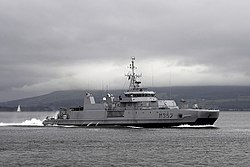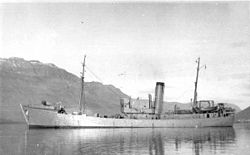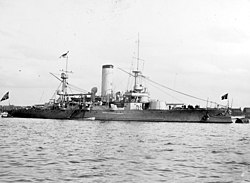This article needs to be updated. The reason given is: This article is out of date! Until we can get it updated, please refer to this article with more up to date info: List of active Royal Norwegian Navy ships.(July 2025) |
 |
| Components |
|---|
| Army Navy (Coast Guard) Air Force Home Guard Cyber Defence Force |
| Ranks |
| Norwegian military ranks |
| Bugle calls |
| Bugle calls of the Norwegian Army |
| Armed Forces equipment |
| Army equipment Naval ships (active) Norwegian military aircraft |
This article is a list of Royal Norwegian Navy fleet units and vessels, both past and present.
Contents
- Fleet units and vessels (present)
- Frigates
- Support vessels
- Royal yacht
- Minesweepers
- Submarine branch
- MTB branch
- Naval Ranger branch
- Logistics branch
- Coast Guard units and vessels
- Naval schools
- Navy vessels (past)
- Amphibious landing vessels
- Armed auxiliaries
- Brigs
- Coastal defence ships
- Corvettes
- Destroyers
- Frigates 2
- Cutters
- Schooners
- Sloops
- Gunboats
- Steam powered gunboats
- Submarine chasers
- Submarines
- Minesweepers 2
- Minelayers
- Monitors
- Offshore patrol vessels
- Torpedo boats
- Training vessels, school ships
- Other ships
- References
- Sources
Ships from the years 1509 to 1814 might be listed under Royal Dano-Norwegian Navy.




























